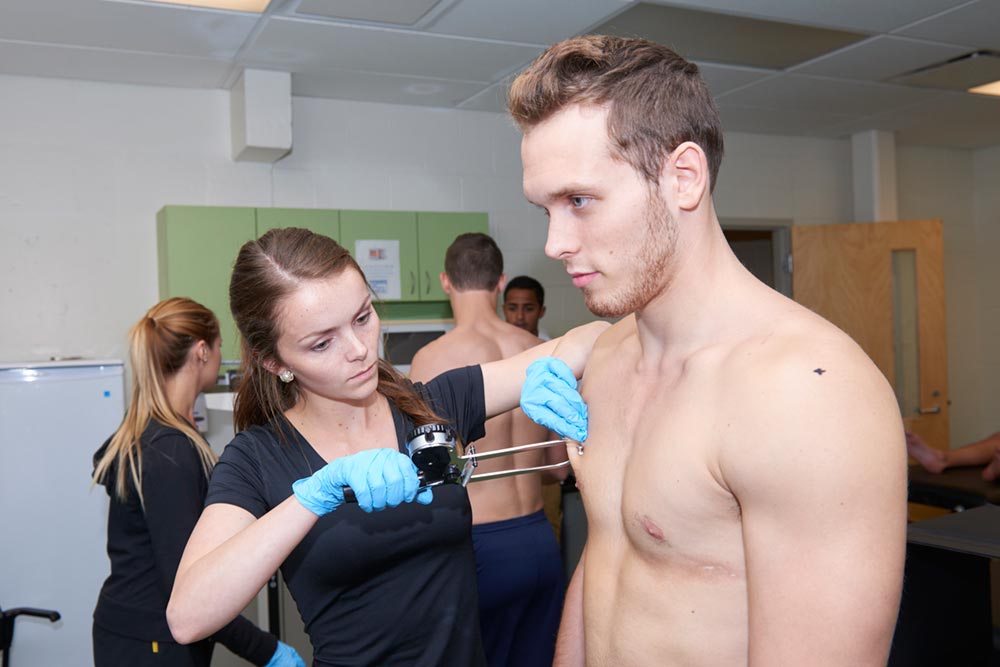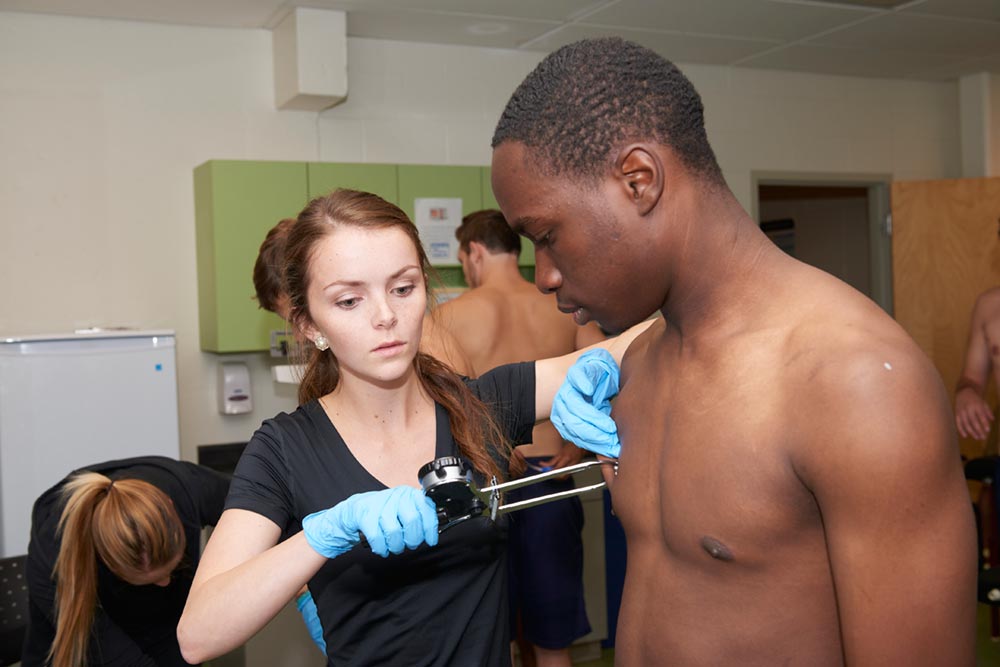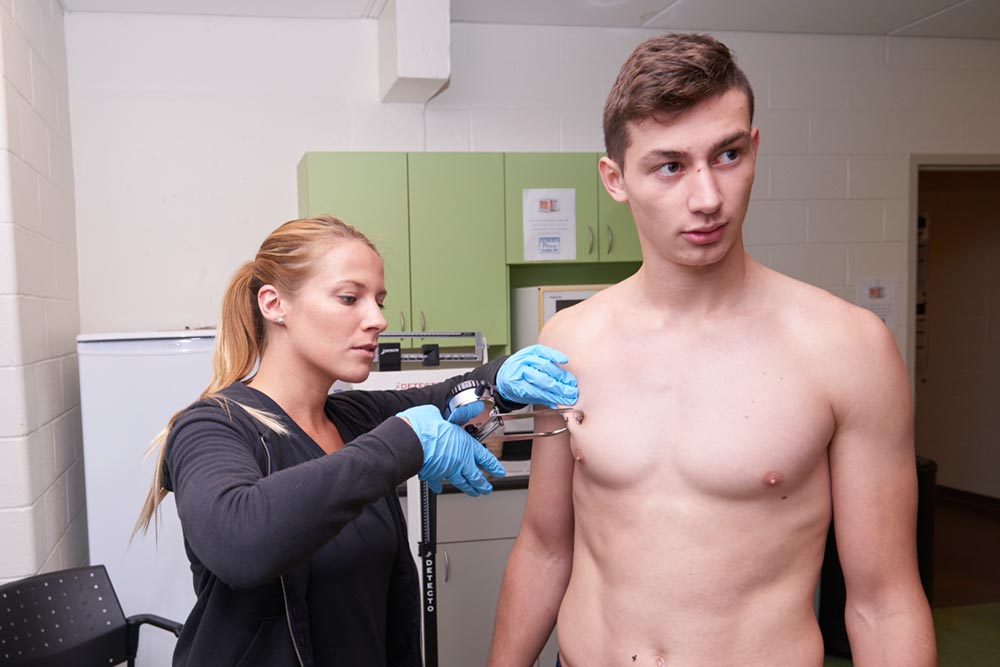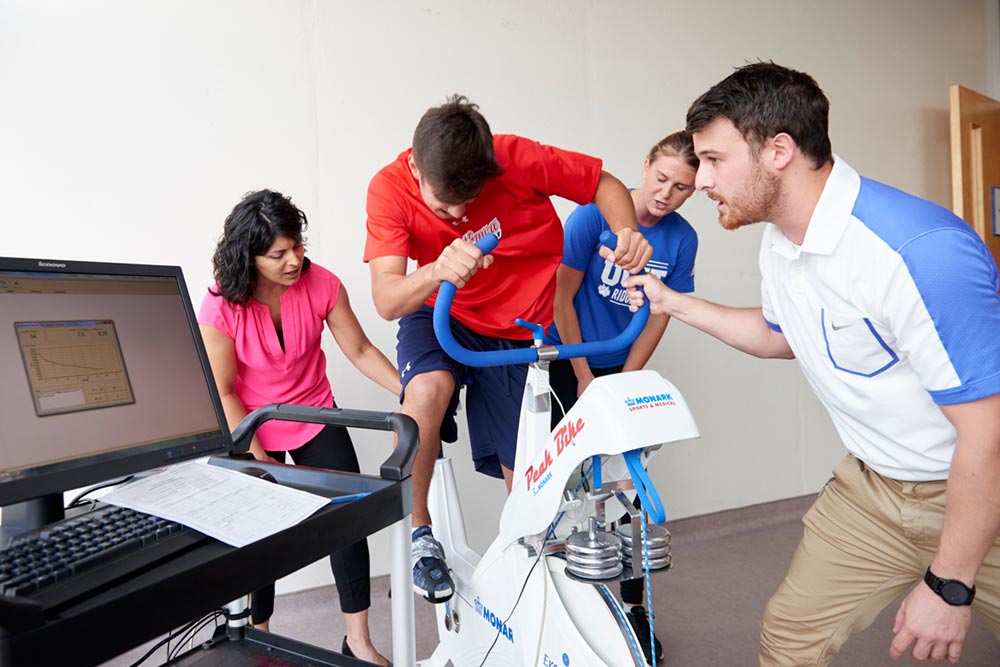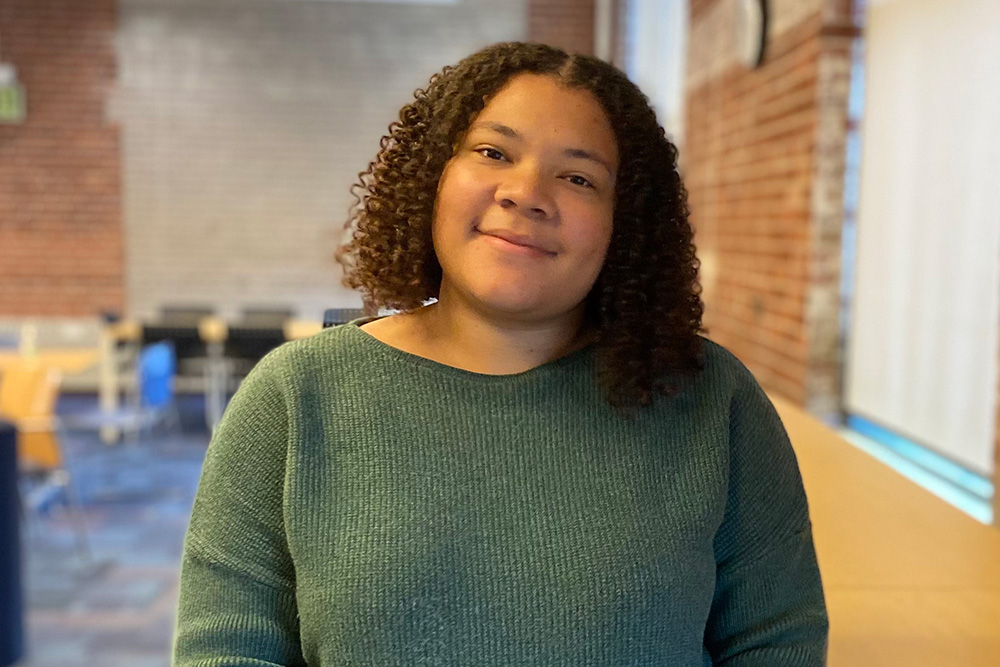UOIT Kinesiology students conduct fitness tests on Oshawa Generals candidates
December 7, 2015
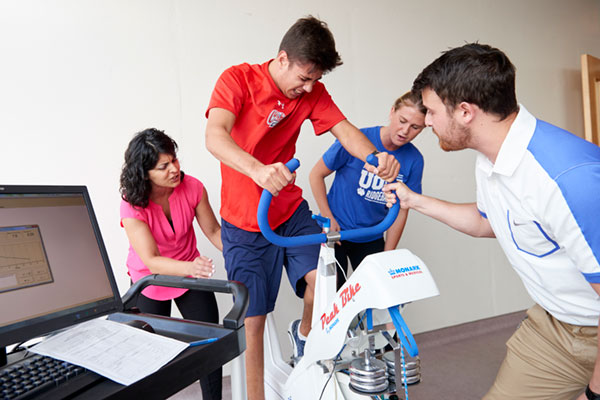
Sixty young athletes vying for a spot on the Oshawa Generals hockey team recently pushed their athletic abilities to the limits through a series of tests conducted by University of Ontario Institute of Technology (UOIT) students at the university’s Athletics Centre.
Dr. Shilpa Dogra, Assistant Professor, Faculty of Health Sciences (FHS), led a group of fourth-year undergraduate and graduate Kinesiology students who assessed a range of fitness measures including anaerobic fitness, strength, body composition and more.
“This was an excellent opportunity for UOIT students to put what they’ve learned into practice,” said Dr. Dogra. “It allowed them to see what athlete testing looks like in a real-world scenario, and provided them with valuable, hands-on experience.”
Fourth-year Kinesiology student Gabrielle Cook, who also helped conduct a Kinesiology-led stroke rehabilitation program last fall, agreed. “These types of volunteering opportunities, as well as formal fourth-year internships, give you a chance to put your skills into practice, and help you network and build connections with other students as well as your professors. For a student pursuing a sports therapy or athletic training career, the experience exposes them to all the different ways a person’s body can be pushed past its limits. I am applying to medical school, so this was a relevant opportunity to see how physical testing works, and understand the human body’s range of motion.”
Kevin Chapman is Head Strength and Conditioning Coach with Elite Training Systems (ETS), which provides high-performance training for UOIT varsity athletes as well as the Oshawa Generals. Chapman’s goal is to track the Oshawa Generals candidates’ athletic progress through these fitness tests.
“The idea is to develop a universal style of testing for the Ontario Hockey League (OHL) level, where players are groomed to play professionally,” he said. “We are looking to establish testing standards that are similar to the ones set for the National Hockey League (NHL).”
The testing session at the university played an important part in determining who would make it onto the Generals this year. This is a rebuilding year for Oshawa, following the team’s 2015 MasterCard Memorial Cup Championship victory in May. Some of the team’s players moved on to the NHL or other professional hockey opportunities in the U.S., which opened up two or three spots on the Oshawa roster for new players this year.
Existing and new team members will be retested by the Kinesiology students sometime in the middle of the season as a way of monitoring their progress.
“A player can spend a maximum of five years in the OHL,” Chapman explained. “We would like to track the Oshawa team members as they develop their athletic abilities throughout this time. This will allow us to determine what kind of program they need; identify any weaknesses and work on them; and see how much they have progressed by the time they are ready to leave the team. It also helps me spot the players that really stand out.”
Dr. Dogra noted that the university has the capacity to conduct fitness testing for other sports teams and community groups. “Not everyone is going to have the special equipment, software and lab space you need to do this kind of testing, so they can come to our university to get it done. It’s a win-win; our students gain valuable hands-on learning while the team or group receives the testing it in needs.”
4 > 1